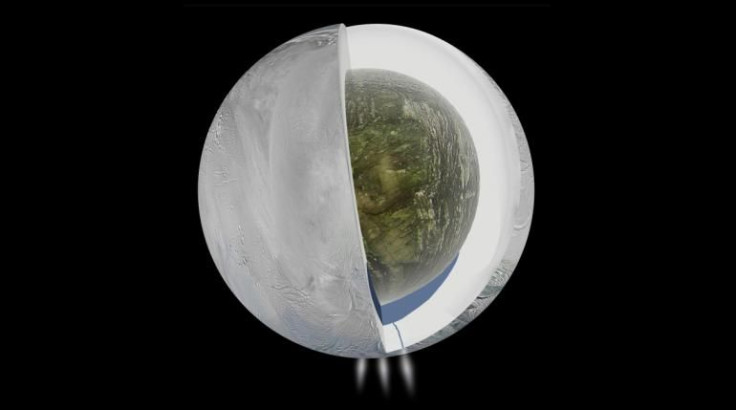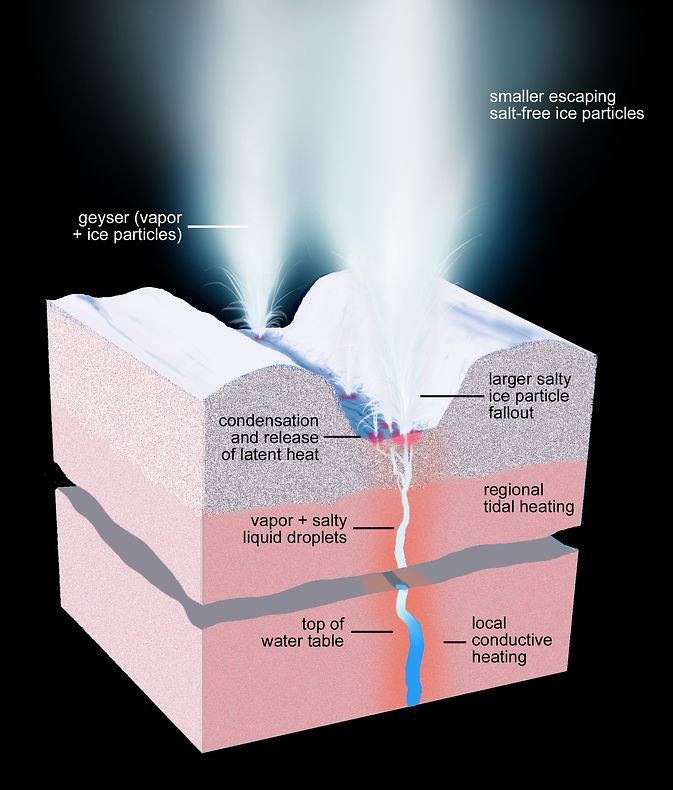NASA’s Cassini Spacecraft Helps Scientists Detect 101 Geysers On Saturn’s Icy Moon Enceladus

Scientists have used data provided by NASA’s Cassini spacecraft to identify 101 distinct geysers erupting on Saturn’s icy moon, Enceladus. The new discovery has excited researchers who consider water to be a fundamental ingredient for harboring microbial extraterrestrial life.
According to NASA, the analysis of the geysers of water vapor and ice particles suggests that it is possible for liquid water from Enceladus’ underground sea to reach the moon’s surface, providing scientists with an opportunity to better understand the sources of extraterrestrial water in the Milky Way galaxy.
“Over a period of almost seven years, Cassini’s cameras surveyed the south polar terrain of the small moon, a unique geological basin renowned for its four prominent ‘tiger stripe’ fractures and the geysers of tiny icy particles and water vapor first sighted there nearly 10 years ago. The result of the survey is a map of 101 geysers, each erupting from one of the tiger stripe fractures,” NASA said in a statement.

After the geysers were first spotted in 2005, scientists came up with a theory that the frequent flexing of Enceladus by Saturn’s tides had something to do with the way geysers behaved on the moon. Some scientists even believed that the friction of ice-plates rubbing across each other on Enceladus’ surface was turning ice into geyser-forming vapor and liquid.
After scientists used high-resolution data collected in 2010 by Cassini’s heat-sensing instruments, they realized that the geysers could be found at specific locations on Enceladus and were not originating from heat generated on the surface of the moon. The findings were published in two papers in the current online edition of the Astronomical Journal.
The scientists also analyzed gravity-related data from Cassini and concluded that the only plausible source of the material forming the geysers is a sea beneath the ice shell of Enceladus.
“Once we had these results in hand we knew right away heat was not causing the geysers, but vice versa,” Carolyn Porco, leader of the Cassini imaging team from the Space Science Institute in Boulder, Colorado, and lead author of the first paper, said in a statement. “It also told us the geysers are not a near-surface phenomenon, but have much deeper roots.”
© Copyright IBTimes 2024. All rights reserved.






















